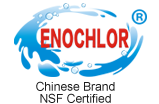Homepage / News Details
CHLORINE WASH IS SAFE TREATMENT FOR FOOD PRODUCTS
- Categroy:News
- Author:
- Origin:
- Release Time:2020-10-12 17:11
- Views:
【Summary】To help keep produce fresh and increase shelf life, scientists are seeking new, more advanced techniques that provide healthy, safe alternatives to conventional packing methods. Researchers from the U.S. Department of Agriculture’s Agricultural Research Service have developed and tested an effective new technique that combines hot water treatment, stem removal, and modified atmosphere packaging to extend the shelf life of grapes. The results from the study were published online by the American Society for Horticulture. The grapes were prepared by cutting off the stems 1 to 2 mm from the fruit or by keeping the clusters intact. After initial preparation, the grapes were subjected to a chlorinated wash and/or hot water treatment and packaged in plastic trays sealed with a gas-permeable film. Grapes that were cut from the stems and treated with hot water and chlorine maintained the highest quality for four weeks, with the least decay among all treatments. A chlorine prewash treatment significantly reduced microbial populations on cluster grapes and maintained better overall quality. Various forms of chlorine are used extensively as a disinfectant in wash, spray and flume waters in the raw fruit and vegetable industry. Chlorine wash is created by dousing water with chlorine gas, sodium hypochlorite or calcium hypochlorite. The use of chlorine gas in water is generally restricted to use in very large operations and requires automated controlled injection systems with in-line pH monitoring. It is highly effective in situations in which soil, plant debris and decaying fruit or vegetables may enter early stages of washing and grading. Calcium hypochlorite, available as a granulated powder or compressed tablet, is the most common source of chlorine used for disinfection of produce and produce process water. Sodium hypochlorite, a water-based formulation, is the chlorine source frequently used in small-scale operations. From a food safety perspective, chlorine has been used safely and effectively for many years to quickly kill microorganisms on food surfaces and prevent cross-contamination. Further, chlorine treatment leaves no detectable residue that could be dangerous to humans.
CHLORINE WASH IS SAFE TREATMENT FOR FOOD PRODUCTS
【Summary】To help keep produce fresh and increase shelf life, scientists are seeking new, more advanced techniques that provide healthy, safe alternatives to conventional packing methods. Researchers from the U.S. Department of Agriculture’s Agricultural Research Service have developed and tested an effective new technique that combines hot water treatment, stem removal, and modified atmosphere packaging to extend the shelf life of grapes. The results from the study were published online by the American Society for Horticulture.
The grapes were prepared by cutting off the stems 1 to 2 mm from the fruit or by keeping the clusters intact. After initial preparation, the grapes were subjected to a chlorinated wash and/or hot water treatment and packaged in plastic trays sealed with a gas-permeable film. Grapes that were cut from the stems and treated with hot water and chlorine maintained the highest quality for four weeks, with the least decay among all treatments. A chlorine prewash treatment significantly reduced microbial populations on cluster grapes and maintained better overall quality.
Various forms of chlorine are used extensively as a disinfectant in wash, spray and flume waters in the raw fruit and vegetable industry. Chlorine wash is created by dousing water with chlorine gas, sodium hypochlorite or calcium hypochlorite.
The use of chlorine gas in water is generally restricted to use in very large operations and requires automated controlled injection systems with in-line pH monitoring. It is highly effective in situations in which soil, plant debris and decaying fruit or vegetables may enter early stages of washing and grading. Calcium hypochlorite, available as a granulated powder or compressed tablet, is the most common source of chlorine used for disinfection of produce and produce process water. Sodium hypochlorite, a water-based formulation, is the chlorine source frequently used in small-scale operations.
From a food safety perspective, chlorine has been used safely and effectively for many years to quickly kill microorganisms on food surfaces and prevent cross-contamination. Further, chlorine treatment leaves no detectable residue that could be dangerous to humans.
- Categroy:News
- Author:
- Origin:
- Release Time:2020-10-12 17:11
- Views:
To help keep produce fresh and increase shelf life, scientists are seeking new, more advanced techniques that provide healthy, safe alternatives to conventional packing methods. Researchers from the U.S. Department of Agriculture’s Agricultural Research Service have developed and tested an effective new technique that combines hot water treatment, stem removal, and modified atmosphere packaging to extend the shelf life of grapes. The results from the study were published online by the American Society for Horticulture.
The grapes were prepared by cutting off the stems 1 to 2 mm from the fruit or by keeping the clusters intact. After initial preparation, the grapes were subjected to a chlorinated wash and/or hot water treatment and packaged in plastic trays sealed with a gas-permeable film. Grapes that were cut from the stems and treated with hot water and chlorine maintained the highest quality for four weeks, with the least decay among all treatments. A chlorine prewash treatment significantly reduced microbial populations on cluster grapes and maintained better overall quality.
Various forms of chlorine are used extensively as a disinfectant in wash, spray and flume waters in the raw fruit and vegetable industry. Chlorine wash is created by dousing water with chlorine gas, sodium hypochlorite or calcium hypochlorite.
The use of chlorine gas in water is generally restricted to use in very large operations and requires automated controlled injection systems with in-line pH monitoring. It is highly effective in situations in which soil, plant debris and decaying fruit or vegetables may enter early stages of washing and grading. Calcium hypochlorite, available as a granulated powder or compressed tablet, is the most common source of chlorine used for disinfection of produce and produce process water. Sodium hypochlorite, a water-based formulation, is the chlorine source frequently used in small-scale operations.
From a food safety perspective, chlorine has been used safely and effectively for many years to quickly kill microorganisms on food surfaces and prevent cross-contamination. Further, chlorine treatment leaves no detectable residue that could be dangerous to humans.
Releate News

Time of issue : 2024-05-08 13:15:35

Time of issue : 2024-04-29 13:33:08

Time of issue : 2024-04-22 08:56:03
CONTACT US
PRODUCTS
CALCIUM HYPOCHLORITE
TCCA
SDIC
BCDMH
FEEDBACK
© 1999-2018 北京网站建设有限公司 Copyright © 2012-2022 All Rights Reserved Powered by www.300.cn 冀ICP备12012949号 津公网安备 12010302002173号 Seo tag

